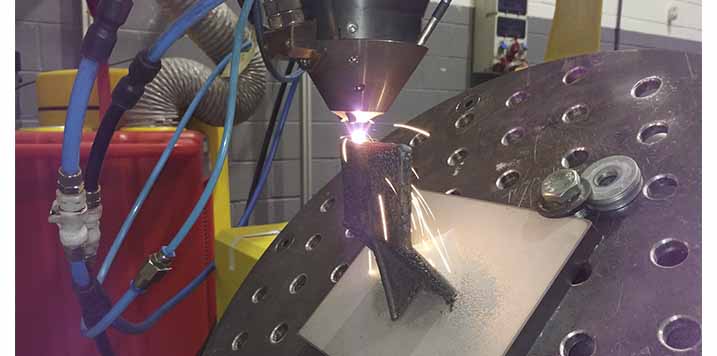 25 May, 2020
25 May, 2020The ANDRÓMEDA R&D Project - “End-to-end solution for the construction of medium/large metallic parts by additive manufacturing” - focuses on the development of a flexible and holistic solution for the additive manufacturing of large-scale parts for aerospace, energetic, and mould sectors. The three-year-old project is nationally funded by the INNOGLOBAL 2017 program of the CDTI agency (INNO-20171103/INNO-20171099), co-funded by European Union Structural and Investment Funds and supported by the Spanish Ministry of Economy, Industry and Competitiveness. The international project has been approved by EUREKA’s Metallurgy Europe 2015 programme.
This initiative aims to create a European ecosystem of factories whose objective is to produce, industrialize, and qualify parts larger than one meter produced by Additive Manufacturing (AM). The Spanish consortium is formed by DELASER, which applies the laser technology in welding, surface treatment, and laser cladding and additive manufacturing (LMD) processes; CT Ingenieros, focused on support activity and manufacturing engineering systems; and AIMEN, as a collaborating entity, specialized in the applications of laser technology, application of the end-to-end concept into the additive manufacturing product cycle and development of monitoring and process control systems.
Started in late 2017, the Andromeda project enters the final phase. Last year, the first specimens were made based on the characteristics of the selected demonstrator, a ring belonging to the VEGA space launcher. Since then, the project partners have made progress in the use of new software for tool path programming of the part, which is highly complex due to its geometry and size, and have managed to generate programs for the work cell that Delaser employs at their facilities. This has allowed new specimens to be made in the same cell.
Another key aspect of the project is the ‘Modeling and simulation of the additive manufacturing process’. CT has continued working on the correlation of the distortions of the manufactured specimens to guarantee an optimal methodology for the simulation of the target part. Progress has also been made in the incorporation of process control and monitoring systems, taking steps towards the objective of being able to manufacture with a closed-loop control.
The developed solution will allow a higher productivity and improvement of the quality of the product, as well as the working conditions, related to the overall automation of the process starting from the design phase. Besides, the entire process will be interconnected and linked throughout the product cycle. This will allow to reduce the production costs by around 30%. To do so, the partners have refined the data architecture on which the end-to-end manufacturing system is built, capable of covering the entire manufacturing chain and supporting the virtualization of the distributed manufacturing process. This will be able to ensure the traceability of the work, also allowing real-time decision taking and a zero-defect manufacturing strategy.
Subscribe to our newsletter. Just insert your e-mail and you will receive the latest news.